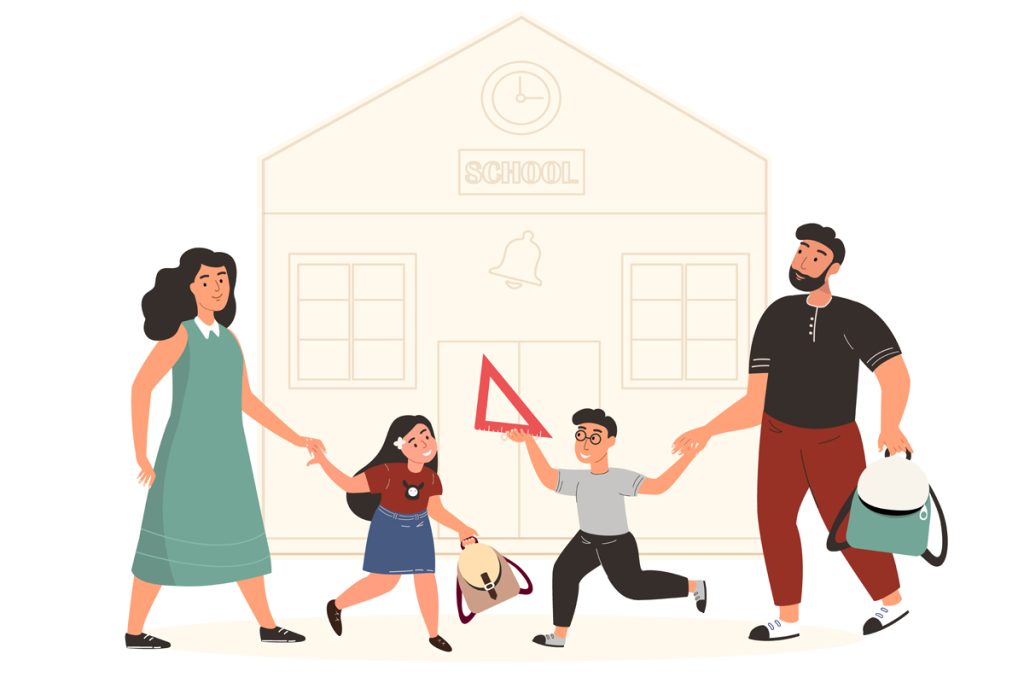By Jo & Carl Violeta
Do you have a spare $370k in your bank account?!
We certainly don’t… but according to research that’s roughly how much you’ll need to pay for your child’s education …. Yikes!
Research conducted by the Australian Scholarships Group’s (ASG) shows that on average the cost of sending your child to private school from Prep to Year 12 is approximately $367,569 per child or $244,822 if you choose a public school.
Your child’s education is one of the most significant and important expenses you’ll face. Whether it’s the transition from pre-school to primary school, a shift to a private school, or a move into high school or even university, the financial balance changes. Being prepared for these expenses and the change in your family’s financial situation AND having a plan in place to mitigate them, can help ease the burden.
Preparing for education expenses
The first step is to estimate how much your child’s education is likely to cost. Whilst this may seem overwhelming or unknown, just come up with a rough figure so you have an idea of the range of savings you might need.
Look at the average cost of school fees for schools in your area. Remember to factor in additional costs including tutoring, uniforms, camps and stationery. Usually primary schools will provide school books and some stationery supplies; we didn’t need to start purchasing school books and stationery until our daughter Eva started high school.
Saving for education expenses
You might like to consider a proper savings plan for your child’s education.
Before you get started with any sort of savings options however, it’s a good idea to consider your overall financial situation. For example, would you be better paying off your credit cards or other debts first before you start saving for education? Preparing to fund your children’s education is a significant and long term expense, so it’s also worthwhile speaking to a finance professional.
There are several savings options available for you to investigate:
- A high interest savings account. We take advantage of compounding interest by using one of these.
- A special education or scholarship fund. Be sure that it fits with your long term financial plan and ask loads of questions. (What fees will be charged? Who can make contributions? Do the suggested investment time-frames align with the timing of your child’s educational needs? What are you allowed to use the funds for? When can you access the funds? What criteria do you need to meet to access the funds?)
- Offset account. Offset accounts can seem a bit complicated, but they don’t have to be. Basically, an offset account is a savings account that’s linked to your home loan. The balance in your account then offsets the amount you owe on your home loan.
- Investment bonds. It’s important to seek personalised, professional advice from a qualified financial advisor and your tax accountant before committing to any of these options.
Tips for reducing school related expenses
No matter how you decide to prepare for school related expenses, finding ways to reduce those expenses along the way can make a big difference over time. Trust us. We have over eleven years’ experience in paying for school related stuff, so we know a thing or two about making savings!
Shop from home first. Have a look at home to see what you already have. If you have a good rummage, you’ll often be surprised by what stationery and other items that you can find.
Bulk cook and buy school lunches. Every month we do a big bulk cook-up of school snacks and freeze them. We use recipes from savingsroom.com.au, The $120 Food Challenge book by Sandra Reynolds, and theorganisedhousewife.com.au
Buy second hand books and uniforms. We buy second-hand uniforms in good condition. Eva actually prefers second-hand uniforms because they aren’t as stiff, they feel softer, and it’s better for the environment than buying brand new. For books, we use sustainableschoolshop.com.au. Be careful when buying second-hand textbooks that they are the same edition as what is on the school’s book list.
Buy non-branded items. When Eva started high school, we spent hours marching up and down the aisles at Officeworks to make sure we bought the exact brands that were on the book list. We later learned that wasn’t necessary for our school, the no-name brands were fine.
Your child’s education is an important but costly expense. There are plenty of different ways to prepare for this. Which option is right for you will depend on many factors including your other financial commitments, so it’s a good idea to seek proper financial advice. Whichever way you decide to prepare for this expense though, it’s best to get started as early as possible.
Jo and Carl Violeta are self-confessed numbers nerds, parents of an energetic toddler and a super switched-on teenager, and co-founders of the award-winning business, Violeta Finance. They are a husband and wife team who are passionate about empowering their community with financial education, love the odd glass of wine, and get a kick out of helping families achieve their homeownership and financial dreams.


